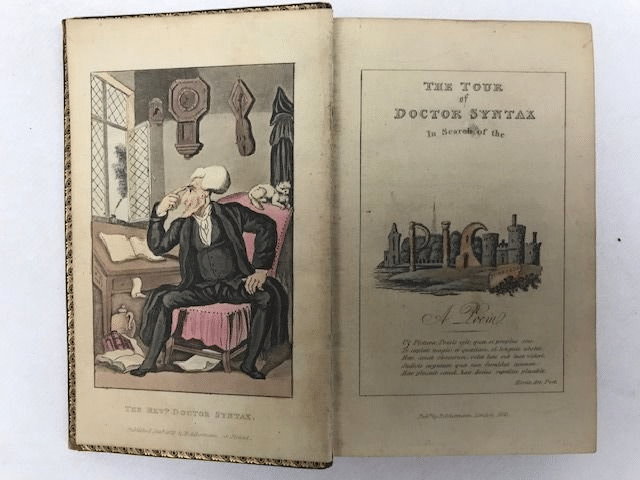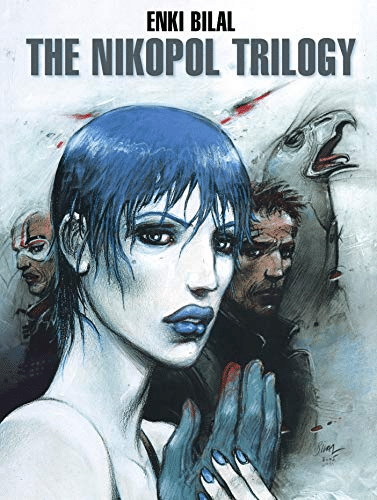La Evolución del Cómic: Un Viaje a través del Tiempo y la Imaginación
¿Alguna vez te has preguntado cómo surgieron esos personajes que nos han acompañado desde la infancia? ¿De dónde vienen esas viñetas que nos transportan a mundos fantásticos con solo pasar una página? Prepárate para embarcarte en un fascinante viaje a través de la historia del cómic, desde sus humildes orígenes en las cavernas prehistóricas hasta las pantallas digitales de hoy. Descubriremos cómo este arte ha evolucionado, reflejando y moldeando nuestra cultura a lo largo de los siglos. ¡Agarra tu lupa de detective y acompáñanos en esta aventura gráfica!
De las Cavernas a las Páginas: Los Albores del Cómic
Imagina por un momento a nuestros antepasados, hace 14.000 años, plasmando sus hazañas de caza en las paredes de una cueva. Estos primeros “artistas” no lo sabían, pero estaban sentando las bases de lo que hoy conocemos como cómic. Utilizando carbón de sus fogatas, creaban secuencias de imágenes que narraban historias, el precursor más antiguo de nuestras amadas viñetas.
Pero el camino desde esas cavernas hasta nuestros cómics modernos fue largo y sinuoso. Tuvieron que pasar miles de años antes de que la humanidad desarrollara las técnicas y tecnologías necesarias para crear historietas en papel. Las primeras manifestaciones de lo que podríamos considerar “proto-cómics” surgieron como sátiras sociales y políticas, generalmente en forma de ilustraciones únicas que capturaban momentos específicos de la realidad contemporánea.
El gran salto llegó en 1809, cuando Thomas Rowlandson publicó “Los viajes del doctor Syntax”. Esta obra es considerada por muchos como el verdadero nacimiento del cómic moderno, ya que presentaba por primera vez una narrativa secuencial con continuidad entre imágenes. Rowlandson no solo dibujaba; estaba escribiendo un nuevo lenguaje visual que cambiaría para siempre la forma en que contamos historias.
Inspirados por Rowlandson, otros artistas comenzaron a experimentar con este nuevo medio. En 1897, “The Katzenjammer Kids” (conocida en español como “Pim, Pam, Pum”) se convirtió en la primera tira cómica serializada, apareciendo regularmente en The New York Journal. Esta serie, que narraba las travesuras de dos hermanos y su madre, marcó el inicio de una nueva era en la que los personajes de cómic se convertirían en parte integral de la cultura popular.
El siguiente hito llegó en 1907 con “Mutt and Jeff” de Bud Fisher, la primera tira cómica publicada diariamente en un periódico. Este formato diario permitió a los lectores seguir las aventuras de sus personajes favoritos con una frecuencia sin precedentes, creando un vínculo más fuerte entre el público y las historias. La longevidad de “Mutt and Jeff”, que se publicó hasta 1982, es testimonio de cuán profundamente puede arraigarse un cómic en la conciencia colectiva.

En 1910, el mundo del cómic dio otro paso gigante con el lanzamiento de “The Funniest”, la primera revista dedicada exclusivamente a tiras cómicas. Esta publicación mensual no solo consolidó el cómic como un medio de entretenimiento por derecho propio, sino que también allanó el camino para “Funnies on Parade”, el primer libro de cómics tal como lo conocemos hoy.
Es fascinante pensar cómo estas primeras obras sentaron las bases para todo lo que vendría después. Desde los superhéroes que dominarían el siglo XX hasta los cómics underground que desafiarían las convenciones sociales, todo tiene sus raíces en estos pioneros. ¿Quieres explorar más sobre los orígenes del cómic y cómo han influido en el arte actual? Descubre recursos fascinantes aquí.
La Era Dorada: Cuando los Superhéroes Conquistaron el Mundo
Con el terreno preparado por los pioneros, el cómic estaba listo para su siguiente gran revolución: la era de los superhéroes. Esta época, que comenzó en la década de 1930 y se extendió hasta finales de los años 50, vio el nacimiento de algunos de los personajes más icónicos de la cultura pop.
Todo comenzó con la aparición de Superman en 1938. Creado por Jerry Siegel y Joe Shuster, este extraterrestre con poderes sobrehumanos capturó la imaginación del público y estableció el molde para los superhéroes que le seguirían. Batman, Wonder Woman, Capitán América y muchos otros no tardaron en unirse a la fiesta, cada uno aportando su propio giro al concepto de héroe enmascarado.
Estos nuevos personajes no solo ofrecían escapismo durante tiempos difíciles como la Gran Depresión y la Segunda Guerra Mundial, sino que también reflejaban los valores y aspiraciones de la sociedad estadounidense. Superman encarnaba el ideal del inmigrante que llega a América para hacer el bien, mientras que Capitán América representaba el patriotismo y la lucha contra el fascismo.
La popularidad de los cómics de superhéroes fue tan abrumadora que pronto se expandieron más allá de las páginas impresas. Programas de radio, seriales cinematográficos y, eventualmente, series de televisión llevaron a estos personajes a nuevos medios, solidificando su lugar en la cultura popular.
Pero la Era Dorada no se limitó a los superhéroes. Géneros como el horror, el crimen y la ciencia ficción también florecieron durante este período, ofreciendo una amplia gama de historias para todos los gustos. EC Comics, con sus famosas series como “Tales from the Crypt” y “Weird Science”, llevó el arte del cómic a nuevas alturas de sofisticación narrativa y visual.
Sin embargo, este período de creatividad desenfrenada no estuvo exento de controversias. Las preocupaciones sobre el contenido violento y sexual en los cómics llevaron a la creación del Comics Code Authority en 1954, un sistema de autocensura que tendría un impacto duradero en la industria.
A pesar de estas restricciones, la Era Dorada dejó un legado indeleble. Los personajes y conceptos creados durante este tiempo continúan inspirando a artistas y escritores hasta el día de hoy. ¿Te apasiona el arte de los superhéroes? Haz clic aquí para descubrir cómo puedes llevar tus habilidades al siguiente nivel.
La Revolución Underground y la Madurez del Medio
Mientras los superhéroes dominaban el mercado mainstream, una revolución se estaba gestando en los márgenes. A finales de los años 60 y principios de los 70, el movimiento del cómic underground sacudió los cimientos de la industria, desafiando las convenciones y explorando temas que el Comics Code Authority había prohibido.
Robert Crumb, con su revista “Zap Comix”, se convirtió en el abanderado de este movimiento. Sus personajes, como Mr. Natural, no solo rompían con los estereotipos de los héroes tradicionales, sino que también ofrecían una crítica mordaz de la sociedad contemporánea. Estos cómics abordaban temas como la sexualidad, las drogas y la política con una franqueza que escandalizó a muchos y liberó a otros.
Al mismo tiempo, en Europa, artistas como Hugo Pratt estaban elevando el cómic a nuevas alturas artísticas. Su personaje Corto Maltés, introducido en 1967, demostró que los cómics podían ser sofisticados, literarios y dirigidos a un público adulto. Pratt fusionó la aventura con la reflexión filosófica, creando un tipo de narrativa gráfica que influyó en generaciones de creadores.

La década de los 80 vio el surgimiento de lo que muchos consideran la edad de oro del cómic para adultos. Obras como “Watchmen” de Alan Moore y Dave Gibbons, y “The Dark Knight Returns” de Frank Miller, deconstruyeron el mito del superhéroe y exploraron temas complejos como la política, la psicología y la naturaleza del poder. Estas obras no solo cambiaron la percepción pública de los cómics, sino que también inspiraron a una nueva generación de creadores a explorar el potencial del medio.
En Francia, la bande dessinée alcanzó nuevas cumbres de sofisticación con obras como la trilogía de Nikopol de Enki Bilal. Mezclando ciencia ficción, política y mitología, Bilal creó un universo visual único que desafiaba las expectativas de lo que un cómic podía ser.
Esta maduración del medio no se limitó a Occidente. En Japón, el manga estaba experimentando su propia revolución. Artistas como Osamu Tezuka, conocido como el “Dios del Manga”, estaban creando obras épicas que abarcaban miles de páginas y exploraban temas profundamente humanos. Series como “Astro Boy” y “Black Jack” no solo cautivaron a los lectores japoneses, sino que también sentaron las bases para la expansión global del manga.
La evolución del cómic en esta era demostró que el medio podía abordar cualquier tema y llegar a cualquier público. Ya no era solo un entretenimiento para niños, sino un forma de arte capaz de explorar las complejidades de la condición humana. ¿Sientes curiosidad por explorar estas técnicas narrativas avanzadas? Ingresa aquí para descubrir recursos que te ayudarán a elevar tu arte.
La Era Digital: Nuevos Horizontes para el Noveno Arte
Con la llegada del nuevo milenio, el mundo del cómic se enfrentó a uno de sus mayores desafíos y oportunidades: la revolución digital. La tecnología no solo cambió la forma en que se creaban los cómics, sino también cómo se distribuían y consumían.
Los artistas comenzaron a adoptar herramientas digitales para su trabajo. Tabletas gráficas, software de ilustración y coloración digital se convirtieron en elementos esenciales del arsenal de muchos creadores. Esto no solo aceleró el proceso de producción, sino que también abrió nuevas posibilidades creativas. Efectos visuales que antes eran imposibles o prohibitivamente costosos de lograr a mano ahora estaban al alcance de cualquier artista con un ordenador.
Pero el impacto de la tecnología fue más allá de la creación. La distribución digital transformó el panorama de la industria. Plataformas de cómics digitales y aplicaciones de lectura permitieron a los lectores acceder a una vasta biblioteca de títulos con solo tocar una pantalla. Esto no solo cambió los hábitos de consumo, sino que también democratizó la publicación, permitiendo a creadores independientes llegar a audiencias globales sin necesidad de grandes editoriales.
El formato webcomic ganó prominencia, con series como “Penny Arcade” y “XKCD” construyendo enormes bases de fans en línea. Estos cómics no solo exploraban nuevos modelos de negocio basados en la publicidad y el merchandising, sino que también experimentaban con formatos que aprovechaban las posibilidades del medio digital, como el “scroll infinito” o la incorporación de elementos interactivos.
La globalización facilitada por internet también llevó a una mayor apreciación y mezcla de estilos de todo el mundo. El manga japonés, que ya había ganado popularidad en Occidente en las décadas anteriores, se volvió aún más accesible, influyendo fuertemente en artistas de todo el globo. Al mismo tiempo, cómics europeos y americanos encontraron nuevas audiencias en Asia y otros mercados previamente difíciles de penetrar.
Los cómics también comenzaron a expandirse más allá de sus límites tradicionales, fusionándose con otros medios. La adaptación de cómics al cine y la televisión alcanzó nuevas alturas, con el Universo Cinematográfico de Marvel convirtiéndose en uno de los fenómenos culturales más grandes del siglo XXI. Esto no solo llevó a los personajes de cómic a una audiencia más amplia que nunca, sino que también influyó en la forma en que se contaban las historias en los cómics, con muchos adoptando un enfoque más “cinematográfico” en su narrativa visual.
La era digital también vio el surgimiento de nuevos géneros y formatos. Las novelas gráficas, que ya habían ganado respeto en las décadas anteriores, se consolidaron como una forma literaria respetada. Obras como “Persépolis” de Marjane Satrapi y “Fun Home” de Alison Bechdel no solo recibieron aclamación crítica, sino que también se incorporaron a currículos académicos, solidificando el lugar del cómic como una forma de arte seria y capaz de abordar temas complejos.
A pesar de estos avances, la industria del cómic también enfrentó desafíos en la era digital. La piratería y la expectativa de contenido gratuito en línea plantearon problemas para los modelos de negocio tradicionales. Muchos creadores y editoriales tuvieron que adaptarse, experimentando con modelos de suscripción, crowdfunding y otras formas innovadoras de monetizar su trabajo.
El futuro del cómic en la era digital parece estar lleno de posibilidades emocionantes. La realidad aumentada y la realidad virtual ofrecen nuevas formas de interactuar con las historias. Los NFTs (tokens no fungibles) están abriendo nuevas vías para la propiedad y el coleccionismo digital. Y la inteligencia artificial, aunque controvertida, está comenzando a jugar un papel en la creación de arte y narrativas.
ElArte del Guion: La Columna Vertebral del Cómic
A lo largo de la evolución del cómic, un elemento ha permanecido constante y crucial: el guion. Independientemente del género, estilo o época, un buen guion es el cimiento sobre el que se construye toda gran historia gráfica. Es la brújula que guía a los personajes a través del mundo creado por el artista, dando vida y propósito a cada viñeta.
El proceso de escritura de un guion para cómic es un arte en sí mismo, que requiere una habilidad única para pensar tanto en palabras como en imágenes. A diferencia de la escritura para novelas o películas, el guionista de cómics debe considerar cómo se distribuirá la narración a lo largo de las páginas y viñetas, creando un ritmo visual que complemente la historia.
Un buen guion de cómic debe:
- Establecer claramente la trama y los personajes
- Crear diálogos naturales y efectivos
- Describir las acciones y escenas de manera que el artista pueda visualizarlas
- Equilibrar el texto y las imágenes para una narración fluida
- Mantener el ritmo y la tensión a lo largo de la historia
Los guionistas de cómics trabajan en estrecha colaboración con los artistas, creando una sinergia única entre palabras e imágenes. Esta colaboración es fundamental para dar vida a los personajes y al mundo en el que habitan. ¿Quieres perfeccionar el arte de escribir guiones para cómics? Descubre recursos valiosos aquí.
El Lenguaje Visual del Cómic: Más Allá de las Palabras
El cómic no solo se trata de contar historias con palabras e imágenes; ha desarrollado su propio lenguaje visual único a lo largo de los años. Este lenguaje incluye elementos como:
Viñetas: Estos marcos rectangulares son la unidad básica de narración en el cómic. Cada viñeta captura un momento específico en el tiempo y la acción, y la secuencia de viñetas crea el flujo narrativo.
Globos de diálogo: Estos espacios, generalmente ovales o rectangulares con una cola apuntando al hablante, contienen los diálogos de los personajes. La forma y estilo del globo pueden indicar el tono de voz o el estado emocional del hablante.
Cajas de narración: Estos rectángulos, generalmente en la parte superior o inferior de una viñeta, contienen texto narrativo que no es diálogo, como descripciones de escena o pensamientos del narrador.
Onomatopeyas: Estas representaciones textuales de sonidos (como “¡BAM!” o “¡CRASH!”) añaden una dimensión auditiva a la experiencia visual del cómic.
Líneas de movimiento: Estas líneas dinámicas indican la dirección y velocidad del movimiento, añadiendo acción y energía a las imágenes estáticas.
Metáforas visuales: Símbolos como bombillas para ideas o corazones para amor comunican conceptos abstractos de forma rápida y efectiva.
Dominar este lenguaje visual es esencial para cualquier artista de cómic. Permite comunicar emociones, acciones y conceptos de manera eficiente y efectiva, a menudo sin necesidad de palabras. ¿Ansioso por dominar el lenguaje visual del cómic? Haz clic aquí para acceder a recursos que te ayudarán a perfeccionar estas técnicas.
El Futuro del Cómic: Innovación y Tradición
A medida que avanzamos en el siglo XXI, el mundo del cómic continúa evolucionando y adaptándose. La tecnología sigue jugando un papel crucial en esta evolución, pero también vemos un renovado aprecio por las técnicas tradicionales y la artesanía del medio.
Algunas tendencias que están dando forma al futuro del cómic incluyen:
Realidad aumentada y cómics interactivos: La tecnología AR está permitiendo a los creadores añadir capas adicionales de interactividad a los cómics impresos, difuminando la línea entre lo físico y lo digital.
Cómics en redes sociales: Plataformas como Instagram y TikTok se están convirtiendo en nuevos medios para contar historias en formato cómic, alcanzando audiencias más amplias y diversas.
Diversidad e inclusión: Hay un creciente énfasis en contar historias de y sobre grupos tradicionalmente subrepresentados, enriqueciendo el panorama del cómic con nuevas voces y perspectivas.
Experimentación con formatos: Los creadores están jugando con nuevas formas de estructurar y presentar narrativas visuales, desde cómics de scroll infinito hasta experiencias de realidad virtual.
Crossmedia y transmedia: Los cómics están cada vez más integrados en ecosistemas narrativos más amplios que abarcan múltiples medios, desde películas y series de TV hasta videojuegos y más allá.
A pesar de estos avances tecnológicos, el corazón del cómic sigue siendo el mismo: contar historias convincentes a través de la combinación única de palabras e imágenes. La habilidad para dibujar, narrar y conectar con el lector sigue siendo tan crucial como siempre.
El futuro del cómic es brillante y lleno de posibilidades. Ya sea que te encuentres dibujando en una tableta digital o perfeccionando tu técnica de entintado a mano, hay un lugar para ti en este emocionante medio. ¿Listo para ser parte del futuro del cómic? Descubre cómo puedes llevar tus habilidades al siguiente nivel aquí.
Conclusión: El Cómic, un Arte en Constante Evolución
Desde las paredes de las cavernas hasta las pantallas de nuestros dispositivos móviles, el cómic ha recorrido un largo camino. Ha evolucionado de simples tiras humorísticas a complejas novelas gráficas, de superhéroes unidimensionales a personajes profundamente matizados. Ha reflejado y moldeado nuestra cultura, ha desafiado convenciones y ha ampliado los límites de lo que es posible en la narración visual.
A lo largo de su historia, el cómic ha demostrado una y otra vez su capacidad para adaptarse y reinventarse. Ha sobrevivido a guerras, censuras, cambios tecnológicos y transformaciones culturales. En cada etapa, ha emergido más fuerte y más diverso, encontrando nuevas formas de conectar con los lectores y contar historias que resuenan con las experiencias humanas universales.
Mientras miramos hacia el futuro, está claro que el cómic seguirá evolucionando. Las nuevas tecnologías ofrecerán nuevas posibilidades, y los cambios sociales inspirarán nuevas historias y perspectivas. Pero en el corazón de todo esto, permanecerá la magia fundamental del cómic: su capacidad única para combinar palabras e imágenes de maneras que despiertan nuestra imaginación y nos transportan a otros mundos.
Ya seas un lector ávido, un artista aspirante o un creador experimentado, el mundo del cómic te invita a ser parte de su continua evolución. Cada página que lees, cada línea que dibujas, cada historia que cuentas, contribuye a este arte dinámico y siempre cambiante.
Así que toma tu lápiz, tu tableta o lo que sea que uses para crear, y únete a la aventura. El próximo capítulo en la historia del cómic está esperando ser escrito, y tú podrías ser quien lo escriba.






